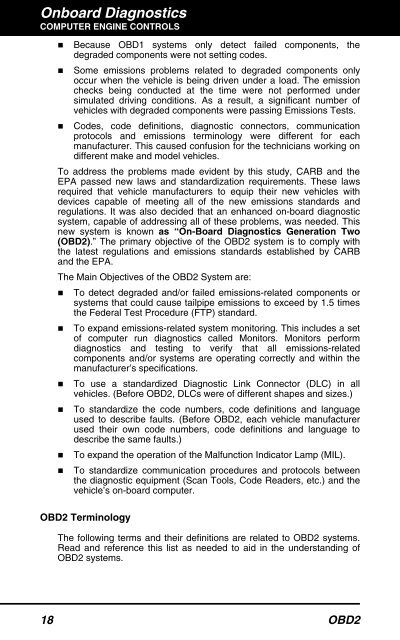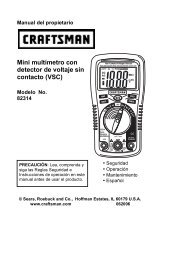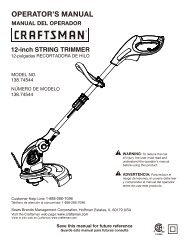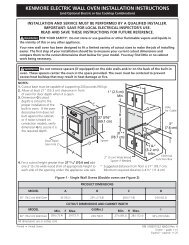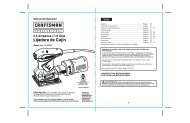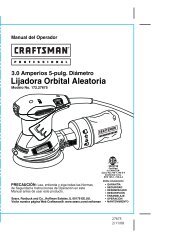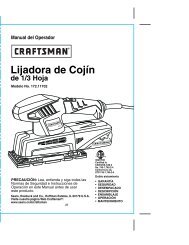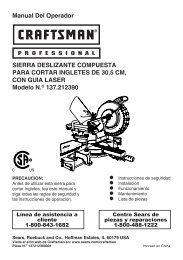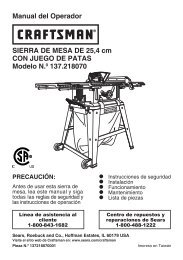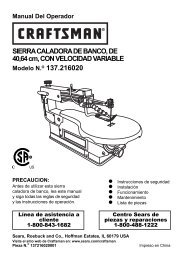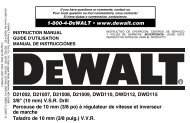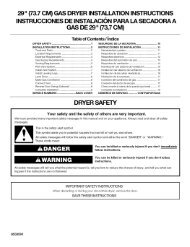CanOBD2 Diagnostic Tool - Sears
CanOBD2 Diagnostic Tool - Sears
CanOBD2 Diagnostic Tool - Sears
- TAGS
- diagnostic
- tool
- sears
- c.sears.com
Create successful ePaper yourself
Turn your PDF publications into a flip-book with our unique Google optimized e-Paper software.
Onboard <strong>Diagnostic</strong>s<br />
COMPUTER ENGINE CONTROLS<br />
� Because OBD1 systems only detect failed components, the<br />
degraded components were not setting codes.<br />
� Some emissions problems related to degraded components only<br />
occur when the vehicle is being driven under a load. The emission<br />
checks being conducted at the time were not performed under<br />
simulated driving conditions. As a result, a significant number of<br />
vehicles with degraded components were passing Emissions Tests.<br />
� Codes, code definitions, diagnostic connectors, communication<br />
protocols and emissions terminology were different for each<br />
manufacturer. This caused confusion for the technicians working on<br />
different make and model vehicles.<br />
To address the problems made evident by this study, CARB and the<br />
EPA passed new laws and standardization requirements. These laws<br />
required that vehicle manufacturers to equip their new vehicles with<br />
devices capable of meeting all of the new emissions standards and<br />
regulations. It was also decided that an enhanced on-board diagnostic<br />
system, capable of addressing all of these problems, was needed. This<br />
new system is known as “On-Board <strong>Diagnostic</strong>s Generation Two<br />
(OBD2).” The primary objective of the OBD2 system is to comply with<br />
the latest regulations and emissions standards established by CARB<br />
and the EPA.<br />
The Main Objectives of the OBD2 System are:<br />
� To detect degraded and/or failed emissions-related components or<br />
systems that could cause tailpipe emissions to exceed by 1.5 times<br />
the Federal Test Procedure (FTP) standard.<br />
� To expand emissions-related system monitoring. This includes a set<br />
of computer run diagnostics called Monitors. Monitors perform<br />
diagnostics and testing to verify that all emissions-related<br />
components and/or systems are operating correctly and within the<br />
manufacturer’s specifications.<br />
� To use a standardized <strong>Diagnostic</strong> Link Connector (DLC) in all<br />
vehicles. (Before OBD2, DLCs were of different shapes and sizes.)<br />
� To standardize the code numbers, code definitions and language<br />
used to describe faults. (Before OBD2, each vehicle manufacturer<br />
used their own code numbers, code definitions and language to<br />
describe the same faults.)<br />
� To expand the operation of the Malfunction Indicator Lamp (MIL).<br />
� To standardize communication procedures and protocols between<br />
the diagnostic equipment (Scan <strong>Tool</strong>s, Code Readers, etc.) and the<br />
vehicle’s on-board computer.<br />
OBD2 Terminology<br />
The following terms and their definitions are related to OBD2 systems.<br />
Read and reference this list as needed to aid in the understanding of<br />
OBD2 systems.<br />
18 OBD2


